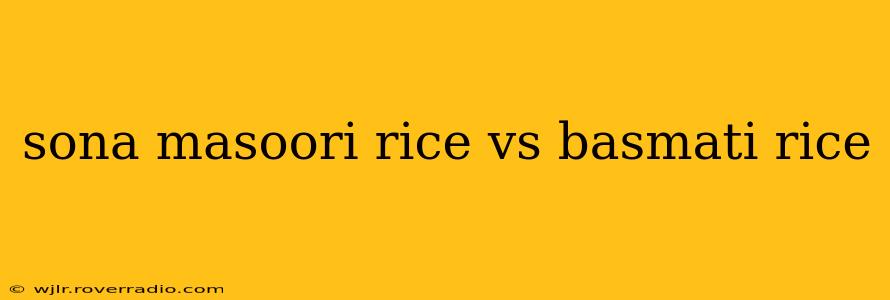Choosing the right rice can significantly impact the flavor and texture of your dish. While both Sona Masoori and Basmati rice are popular choices, they offer distinct characteristics that cater to different culinary preferences. This comprehensive guide will delve into the key differences between these two varieties, helping you make an informed decision for your next meal.
What is Sona Masoori Rice?
Sona Masoori, also known as Sonamasuri, is a short to medium-grain rice originating from Andhra Pradesh, India. It's prized for its soft, fluffy texture after cooking and its slightly sweet flavor. Its relatively high amylopectin content contributes to its stickiness, making it ideal for dishes where the grains cling together, such as rice puddings, kheer, or South Indian savory preparations. It's also a versatile choice for everyday meals.
What is Basmati Rice?
Basmati rice, meaning "fragrant" in Hindi, is a long-grain aromatic rice traditionally grown in the foothills of the Himalayas. Its distinctive long grains, fluffy texture, and subtle nutty aroma are its hallmark features. The grains separate easily after cooking, making it perfect for dishes where distinct grains are desired, such as biryani, pilaf, or as an accompaniment to curries.
Sona Masoori Rice vs. Basmati Rice: Key Differences
| Feature | Sona Masoori Rice | Basmati Rice |
|---|---|---|
| Grain Length | Short to medium grain | Long grain |
| Texture | Soft, fluffy, slightly sticky | Fluffy, non-sticky |
| Aroma | Mild, slightly sweet | Strong, distinctive nutty aroma |
| Cooking Time | Relatively shorter cooking time | Longer cooking time |
| Best Uses | Rice puddings, kheer, South Indian dishes | Biryani, pilaf, accompaniments to curries |
| Price | Generally more affordable | Usually more expensive |
What is the nutritional value of Sona Masoori rice and Basmati rice?
Both Sona Masoori and Basmati rice are good sources of carbohydrates, providing energy. However, the nutritional profiles may vary slightly depending on the specific growing conditions and processing methods. Generally, both contain similar levels of vitamins and minerals, including small amounts of iron, magnesium, and some B vitamins. Brown rice varieties of both types offer higher fiber content than their white counterparts. It's always best to check the specific nutritional information on the packaging.
Which rice is healthier, Sona Masoori or Basmati?
There's no single "healthier" rice. The nutritional value depends on the type (brown vs. white) and the method of preparation. Brown rice varieties of both Sona Masoori and Basmati contain more fiber, which aids digestion and contributes to better blood sugar control. Ultimately, incorporating a variety of grains into a balanced diet is generally recommended for optimal health.
Is Sona Masoori rice gluten-free? Is Basmati rice gluten-free?
Yes, both Sona Masoori and Basmati rice are naturally gluten-free. However, always check the label to ensure that there's no cross-contamination during processing.
Which rice is better for weight loss?
Neither rice is inherently better for weight loss. Both are carbohydrate sources, and controlling portion sizes is crucial for weight management. Choosing brown rice over white rice in either variety can be a slightly better option due to the higher fiber content, which can promote satiety and aid digestion. Weight loss is primarily achieved through a balanced diet and regular exercise.
Conclusion: Choosing the Right Rice
The choice between Sona Masoori and Basmati rice ultimately comes down to personal preference and the intended dish. Sona Masoori's soft, sticky texture is perfect for creamy dishes, while Basmati's long grains and aromatic flavor lend themselves well to more elaborate preparations. By understanding the unique characteristics of each rice type, you can select the ideal grain for a truly delicious and satisfying culinary experience.
